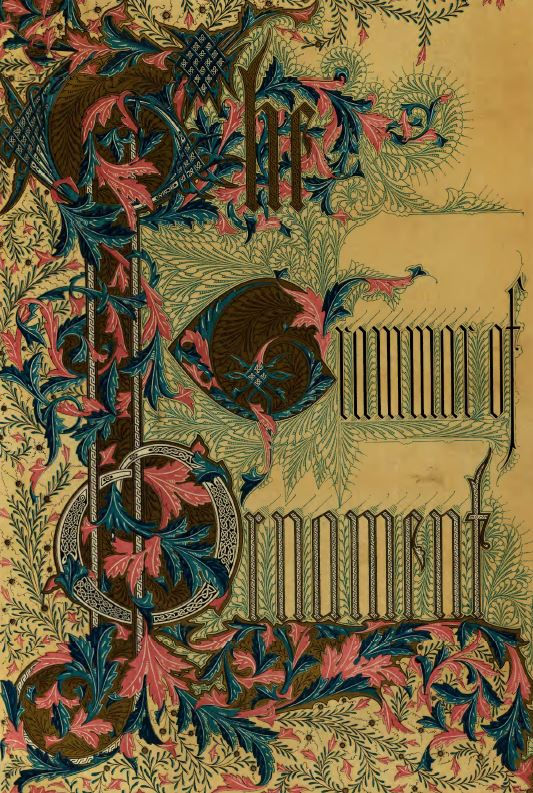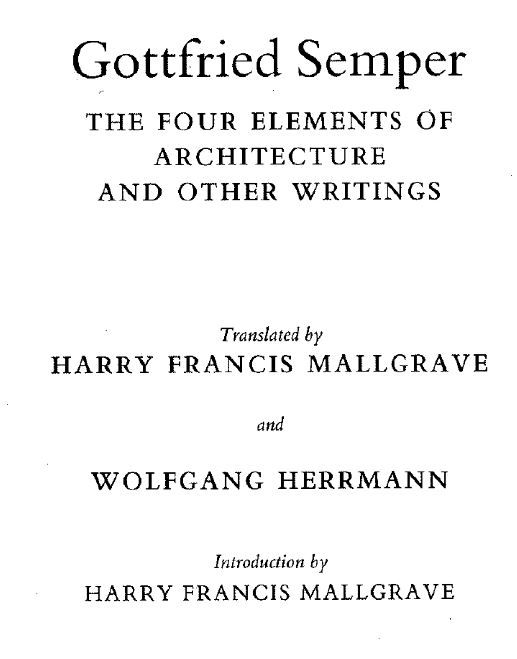The Ornament
- Janus Wayne Lim
- Feb 18, 2021
- 3 min read
Viewed from the works of Jones Owen and Semper Gottfried


The two readings for this week offered insight on the ever-evolving role of architecture and how it is a participator in both the past and the present, presenting the difficulties of their current architecture. In the “Grammar of Ornament” by Jones Owen, he illustrates how architectural works, particularly ornamentation, should be based on geometry of nature; the result of the influences of nature in everyday life. He lays out various ‘propositions’; a set of principles which underpin his work. For example, Proposition 11 says that “In surface decoration all lines should flow out of a parent stem. Every ornament, however distant, should be traced to its branch and root.” He elaborates that the Corinthian order of architecture is said to have been suggested by acanthus leaves found growing around an earthen pot; its eventual application on the formation of the capital column gave rise to the Corinthian order.
Owen believed that man is everywhere impressed with the beauties of nature, and thus seeks to imitate and create. Even Owen’s work on the Crystal Palace, the ironwork decorated with bold primary tones nodded to the Alhambra and Ancient Greece, motifs which surfaced in his work. He believed that in the best periods of art, ornamentation was based upon an observation of the principles which regulate the arrangement of form in nature. In his book, he displays illustrations of the various forms of art from nature, drawings of leaves, flowers and fruits. His goal was to construct a history of the art of ornamentation, as the basis for future works in ornamentation. He believed that to create new forms of ornamentation, we need to ‘trace back to the branch and root’. Ultimately Owens acknowledges the difficulties of the architecture, wherein the architect is under the influence of past education while also being receptive to an ill-informed public.
One criticism of Owen’s book is that it offers up the ornament of historically and culturally distant cultures as objects of emulation at the same time seeking conceptual mastery over those cultures which can be perplexing. It is however worthwhile to discuss the ‘Grammar of the Ornament’ in understanding Modern Architecture in the ‘absence of ornamentation’ as well as looking at Contemporary Architecture today and the return of ornamentation in their more digital and parametric forms.
The points made in the “Four Elements of Architecture” by Gottfried Semper shed light on the subject from a different angle as he reflects on the development of design and construction being inferior to the work of previous generations, regardless of attempts at imitation. He elaborates by giving the example of the invention of the oil lamps, and how their design fails to materialise its purpose, saying that “Now our eyes are blinded by the blaze of those apparitions of fire and the facades behind (referring to the stars and the moon) are rendered invisible. He claims that there is a stagnancy in the way we design and use nature as reference, a habit still suffered by the trendsetters of the contemporary age.
Semper believes that the breakthroughs in art are hinged on by the scientific explorations to support the art movement. Actively, the talents of man, both scientific and artistic, take part in the recognition and presentation of beauty. In the case of Industrialisation, the western superpowers like Britain, Germany were competing for who had the better technology, and this in turn gave rise to the industrial arts. Governments took measures to improve craftsmanship of the goods they produced. It is then perhaps not a question of which should come first, the chicken or the egg, art or science, but in fact a marriage of the two as we advance further to the 21st century.



Comments